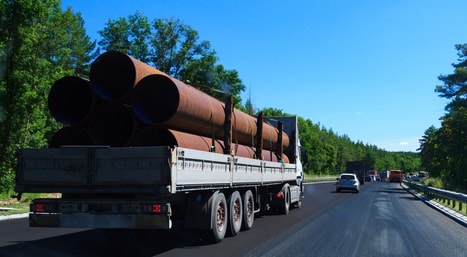If you are in charge of a fleet, then you know just how important it is to pay close attention to the vast world of safety regulations and standards, no matter how stringent or convoluted they may seem. One of the most crucial of these safety protocols is the use of rating and serial plates – and the information that is included on them. Today, we are going to delve into GVWR, a vehicle weight standard that all fleet managers need to know inside and out to ensure that their planning systems and safety standards can remain well intact.

GVWR, otherwise known as gross vehicle weight rating, is, simply put, a weight rating for your commercial vehicle. It’s a standard that is used for virtually all vehicles, including the pick-up that’s sitting in your driveway as well as the Mack Truck that’s part of your fleet.
Although GVWRs differ from vehicle to vehicle, the ratings are designed to take into account two main properties: 1) the base curb weight of the vehicle and 2) the weight of optional accessories, the weight of cargo, and the weight of the driver and passengers. Unless there is a recall from the vehicle maker or a formal change made on the part of the Federal Highway Administration’s Office of Freight Management and Operations, the GVWR of your vehicle will always stay the same.
Just like with any other vehicle rating, there are a number of key GVWR best practices that must be followed in order to ensure that your fleet is running at the weight that it should be. Let’s take a look at the GVWR best practices:
It’s important to note that each class comes with additional state and federal regulations to consider, such as commercial license requirements. Many of these regulations correspond to weight, which means that you must do your research and consult your presiding agencies before you make an investment or hire.
Typically, the GVWR comes already attached to the vehicle in the form of a thin metal plate or label that has been installed either on the truck door jam or inside of the door. But, just because most commercial vehicles already come equipped with the GVWR label doesn’t mean that you can rely on it being there. There are several reasons for this, including wear-and-tear or previous sellers unwittingly removing it. If you buy the commercial truck used, the original label can also be missing if parts have been swapped out due to repair or damage.

Let’s look at a few methods you can follow to guarantee that your GVWR plates are up-to-code and exactly where they need to be:
GVWR is only one component of transportation safety, but it’s a vital one. Understanding GVWR, and adhering to proper weight classification limits, helps to ensure the safety of your drivers as well as those who share the road with them.
Our sales engineers are experts in automatic asset tracking, tagging and identification,a nd can answer all your questions. Get in touch now.
Lets Talk ›